The Windows Phone 7 Review
by Anand Lal Shimpi & Brian Klug on October 20, 2010 7:00 PM EST- Posted in
- Smartphones
- Windows Phone 7
- Microsoft
- Mobile
Minimalist, Even Down to the Status Bar
When Apple introduced the iPhone, Steve Jobs made the point that a virtual keyboard was preferable to a fixed keyboard because you shouldn’t always be stuck with the same keyboard layout. Some applications would require a slightly different layout and other applications wouldn’t need it entirely. A physical keyboard requires you to pay the space penalty regardless of what you’re doing with the phone.
Microsoft takes that same argument even further with Windows Phone 7. The status bar present on all smartphones indicates things like signal strength, WiFi reception, Bluetooth status, remaining battery life and the current time. On a Windows Phone, the status bar remains hidden most of the time. The only element that’s nearly always present is the current time. The rest stay hidden unless you tap the top of the screen to reveal them for a short period of time.
Microsoft views these items as only useful for short period of time. All that’s necessary is a quick glance to check on their state, they don’t need to be a permanent part of the OS.
When you first wake your phone up you’ll see the full status bar, but the moment you unlock it the bar disappears leaving only the clock (of course the disappearing animation is very well done).
Elements of the status bar will appear on their own if something significant has happened. For example if you walk into range of known WiFi you’ll see the WiFi icon appear as the phone connects.
This is one of those features that you’ll either love or hate. Microsoft tried to do what it thought was best across the OS and you’re not always going to agree with its decisions. In this case, there were a few times when I wished the status bar was permanent. If my phone was loading a webpage slowly and I wanted to know if poor reception was to blame, or to just find out how much battery life I had left. Both of these problems go away if we eventually get faster/better network coverage and phones with significantly longer battery life, but today they are concerns. Despite the obvious limitations, the auto hiding status bar paves the way for what is ultimately the cleanest smartphone UI on the planet today. All that’s visible on the screen is what you’re ultimately trying to do with the phone. If it’s email, that’s all you see, if it’s a web page that’s pretty much it.
Even the URL bar in IE is thinner than what you’d find on Android or iOS. It’s almost uncomfortably thin. But Microsoft believes it’s worthwhile to always display it (rather than hide it as you scroll down) and there’s no need to make it bigger than it needs to be. Tap on the URL bar and you’ll get a slightly bigger version for text input (but still not too big).
The App Bar
Some applications need more functionality than can reasonably be provided by Windows Phone 7’s very minimal interface. For those applications Microsoft uses the app bar. The app bar is a group of buttons (up to 4) at the bottom of the screen. The app bar in IE mobile has three buttons: add (to favorites), favorites and tabs.
All app bars have an ellipses in the far right corner. Tapping the ellipses will not only reveal more options, but it will also reveal the text labels for the buttons on the app bar to help new users learn the ropes. To keep the app bar as simple as possible no buttons on any app bar are labeled, you’re supposed to eventually just know what they mean.
I found myself tapping the ellipses to figure out what certain buttons did but the longer I used the phone the less I needed the labels. The space savings worked, good job Microsoft.


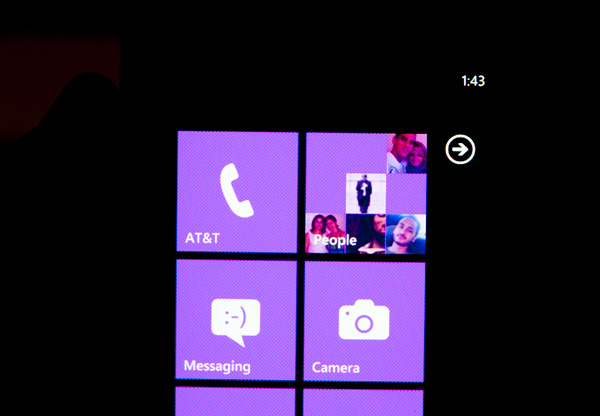
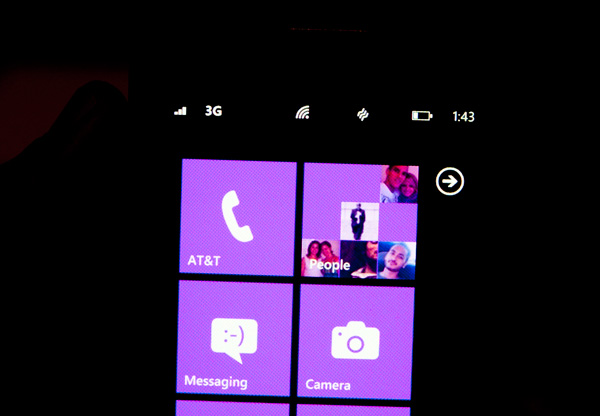
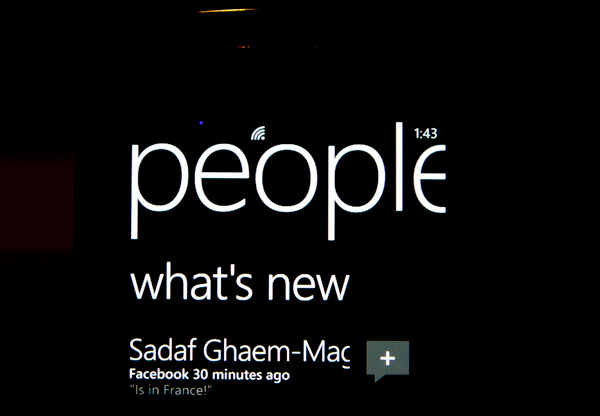
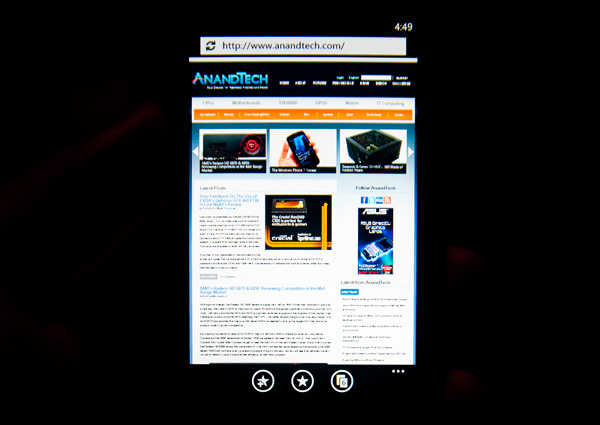
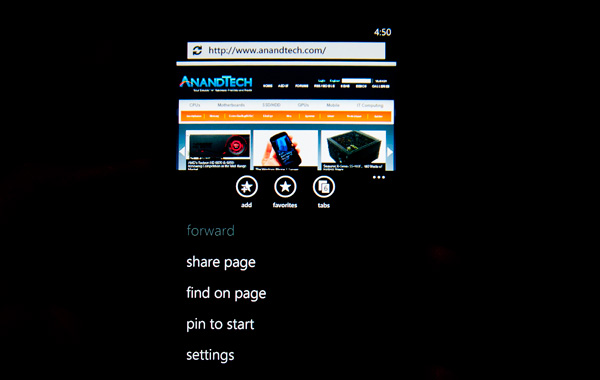








125 Comments
View All Comments
Crono - Thursday, October 21, 2010 - link
A lot may not have been taken from the Kin One and Kin Two, but the square, multi page Start is the same concept that was implemented in the Kin phones.Looking forward to moving from my Kin One to the Surround. Microsoft is offering 3 months free Zune Pass for those who sign up to be notified about preorders.
heelo - Thursday, October 21, 2010 - link
You might be the only owner of a Surround.That thing has a "value proposition" that I'm really struggling to relate to.
peter7921 - Thursday, October 21, 2010 - link
I have to give recognition to Anandtech for another great review. I have been looking for a detailed review on WP7 and you guys delivered. Not only is it extremely informative but it's also very well written. I read through it all, not once feeling bored or skipping ahead.These types of articles are the reason Anandtech is my first source for all things tech!
Keep up the great work guys!
Confusador - Thursday, October 21, 2010 - link
OK, wow. I mean, even by Anandtech's unusually high standards that was intense. Just one thing I'm not clear on, though... am I reading this correctly?"WP7 calls presents its browser user agent as “Mozilla/4.0 ...""
If that's correct we've come a long way from the days I had to have Firefox masquerade as IE to be effective.
Guspaz - Thursday, October 21, 2010 - link
IE has *always* done this, including on the desktop. IE6 reports as as Mozilla/4.0 too. IE2 also did it (a different version of Mozilla, though). A quick search didn't turn up IE1 user agent strings, but I assume it also did.Spivonious - Thursday, October 21, 2010 - link
Remember back when IE was introduced, Netscape was king. Netscape is based on Mozilla. That's the only reason it's in there - so pages made for Netscape would load correctly in IE.arturnowp - Thursday, October 21, 2010 - link
IT seems strange that WP7 cannot pass test, has very slow JavaScript engine but still pages are fluid and displayed porperly. Maybe Microsoft renders pages remotely and serves them to the phne?UCLAPat - Thursday, October 21, 2010 - link
Wow! After reading this review, it makes all the other reviews look like previews. Definitely going to be considering WP7 when it's time to upgrade my phone. Still have time to burn on my current 2 year contract. By the time it's up, LTE should be up and running and Verizon will probably have a WP7 device for us to consider as well.Apps will come. But they're not a huge part of my life anyway. I want a rock-solid core experience for a phone. A smartphone has to nail the basic experiences first (calls, messaging, calendar, etc). I never liked the main screen completely filled with app icons. That reminded me too much of my old desktop computer before I cleaned up the desktop.
Belard - Thursday, October 21, 2010 - link
But very detailed... tells us pretty much everything anyone can ask.Thanks...
While I'm not exactly PRO-MS... its good to see good design.
I still like Google's a bit more and its shortcoming are easy to spot. Hopefully Android 3.0 will improve on its weaknesses.
The icon / naming is well thought out and is used by others... including Apple, but not on a phone.
silverblue - Thursday, October 21, 2010 - link
"...displays up to 8 tiles of people you’ve either recently communicated with or whose profiles you’ve viewed/stalked."LOL.